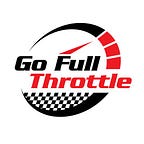Week 11 GFT NASCAR AI Driver Rankings: Byron Still P1 after Talladega
28 APRIL 2002
By Bob Francis, Managing Editor
Go Full Throttle Racing News
With his win at Talladega on Sunday and his previous win at COTA, Ross Chastain moves up 2 spots to P5 in the Go Full Throttle NASCAR AI Driver Rankings. The Trackhouse Racing driver survived a chaotic final lap at Talladega with cars wrecking behind him for the win. One of those cars caught behind the chaos was the Hendrick Motorsports № 24 of Willam Byron who ended up finishing 15th. Even with the P15, Byron holds onto the top ranking (GFT AI Score 1652.2) in this week's predictive models primarily because he (and now Ross Chastain) are the only drivers with 2 wins each in the 2022 NASCAR Cup Series. The algorithms place favorable weighting on wins and consistency. Byron’s Hendrick teammate Chase Elliott is P2 by a razor thin 1.8 points in the GFT AI Score, with Ryan Blaney P3 at 1645.1. Note that NASCAR’s official Cup Series standings have Elliott P1 at 368, Blaney P2 at 347, and Byron P3 at 334 points.
The Big Movers in Week 10
With his 2nd place finish Sunday at Talladega, Austin Dillon (RCR № 3 Chevrolet) jumps up 4 spots in this week's rankings to P14. Other drivers in the top 10 moving up- Kyle Busch, Ross Chastain, Kyle Larson all up 2 spots. RCR driver Tyler Reddick blow an engine early on Sunday and finished last at P39, dropping him 5 spots down to P17 in the rankings. A casualty of an early wreck in Talladega also hurt Joey Logano who finished 32nd resulting in a loss of 3 spots to P8.
The Top Ten
P1 Byron
P2 Elliott
P3 Blaney
P4 Kyle Busch
P5 Chastian
P6 Bowman
P7 Larson
P8 Logano
P9 Truex Jr
P10 Briscoe
Manufacturer = 5 Chevrolet, 3 Ford, 2 Toyota
Predictions for Dover
With no data on the Gen 7 car at Dover and little comparable data, the predictive model confidence level is in the medium zone. The data says the 4 Hendrick cars, who were all strong here last year, have a higher probability, as do Blaney and Kyle Busch. Specifically, the GFT Prediction Model says Elliott is the favorite to win. Our picks: P1 Elliott, P2 Larson, P3 Blaney, P4 Kyle Busch, P5 Byron.
How do the Go Full Throttle AI models work? (Repeated for context as we have new subscribers joining each week)
Algorithms
The Go Full Throttle AI Driver Rankings is a cloud based predictive analytics system that uses our proprietary algorithms utilizing artificial intelligence and machine learning technology to dynamically tune and improve accuracy over time. Data feeds into our system include our Pre-Season rankings and the data available from NASCAR and other trusted NASCAR Cup Series sources that include (but not limited to) inputs such as Driver points, Stage points, Stage wins, top speed, lap times, and laps led from all practice sessions, qualifying and the races.
How do predictive models work?
Can artificial intelligence and machine learning algorithms really make accurate predictions? YES! In fact, our proprietary models accurately predicted 8 out of 10 F1 race wins in 2021, including Max Verstappen’s Driver Championship over Lewis Hamilton. Our NASCAR model was equally as accurate correctly predicting 7 of the drivers making the Round of 8 in the 2021 Cup Playoffs as well as predicting Kyle Larson winning the Cup Series Championship. These models will only get “smarter” in 2022 as more data and “learning” will improve accuracy.
Context is key!
“Artificial intelligence refers to the general ability of computers to emulate human thought and perform tasks in real-world environments, while machine learning refers to the technologies and algorithms that enable systems to identify patterns, make decisions, and improve themselves through experience and data” according to Columbia University’s School of Engineering. But Microsoft’s definition breaks this complexity down even more: “AI and machine learning enable companies to discover valuable insights in a wider range of structured and unstructured data sources. For better, faster decision-making, data scientists use machine learning to improve data integrity and use AI to reduce human error — a combination that leads to better decisions based on better data.” For us motorsports fans, we might use the analogy that artificial intelligence (AI) is the car and machine learning (ML) is the engine — you need both to win.
Dynamic tuning to improve accuracy
When we say “dynamic” we are referring to “near real time” data continually feeding the models. Besides the obvious final race results, as an example, our system will “watch” a number of data feeds looking for trusted information, such as the F1 live leaderboard with lap times during practice or qualifying results, laps led on race day, and final results.
